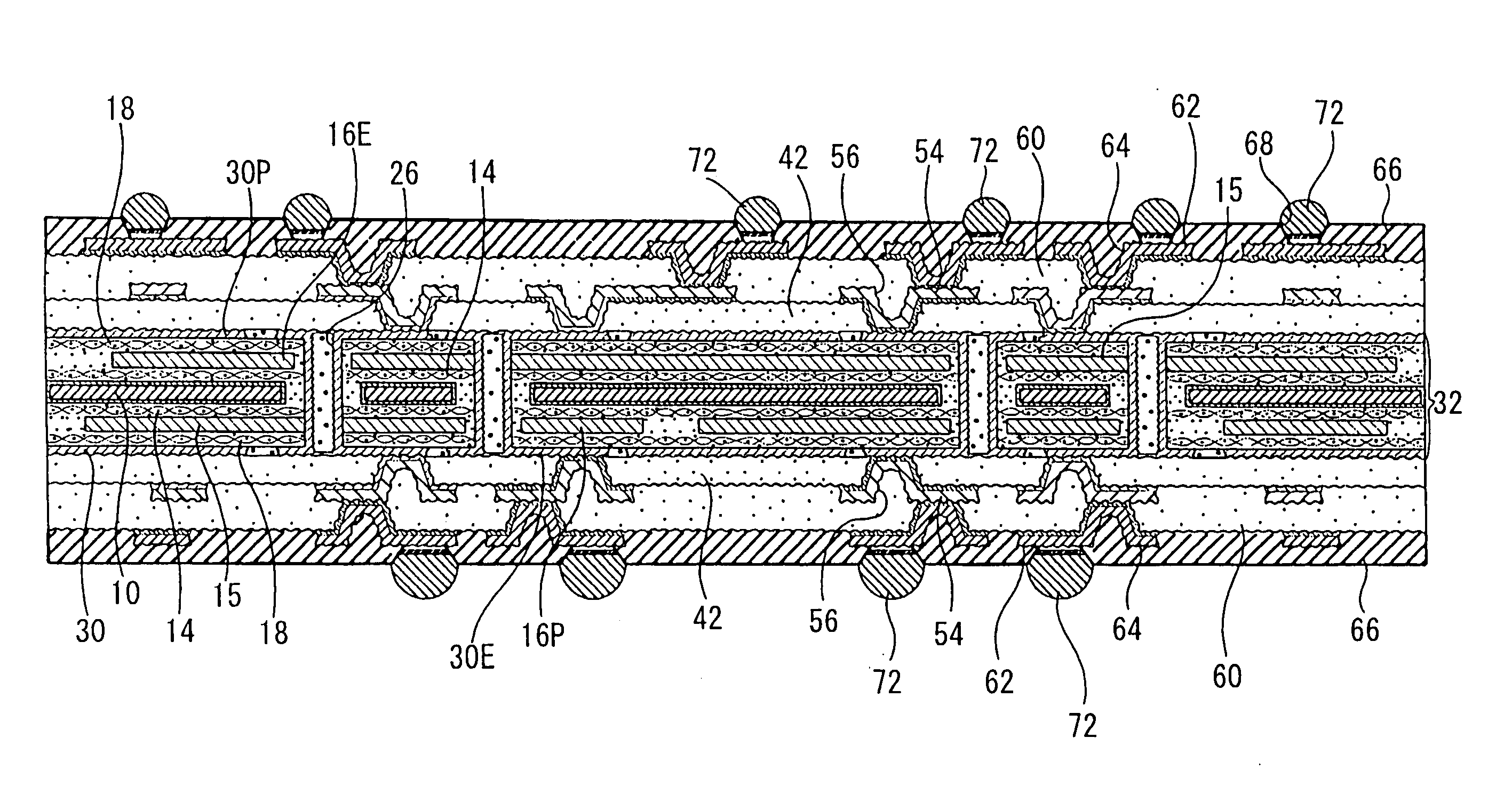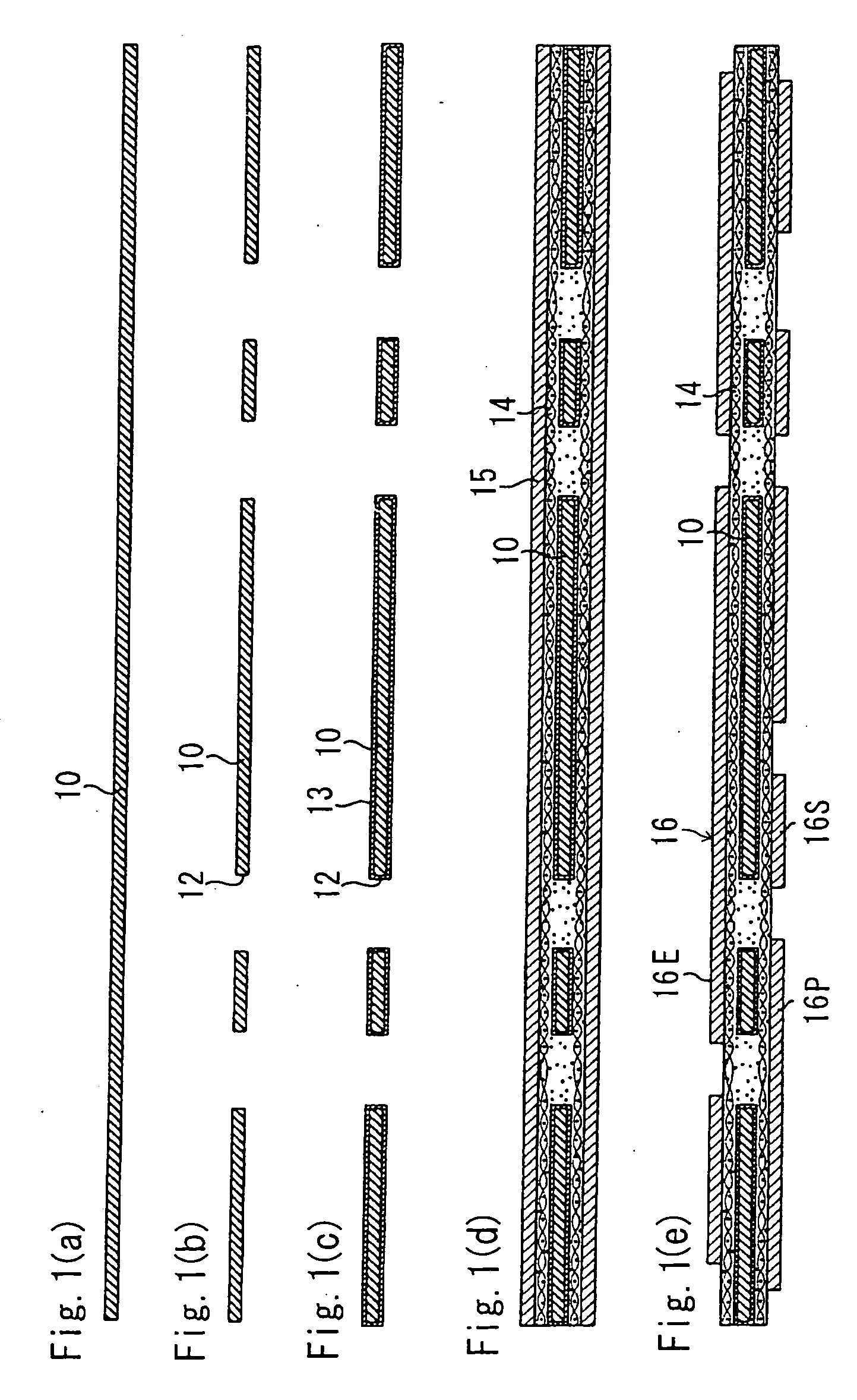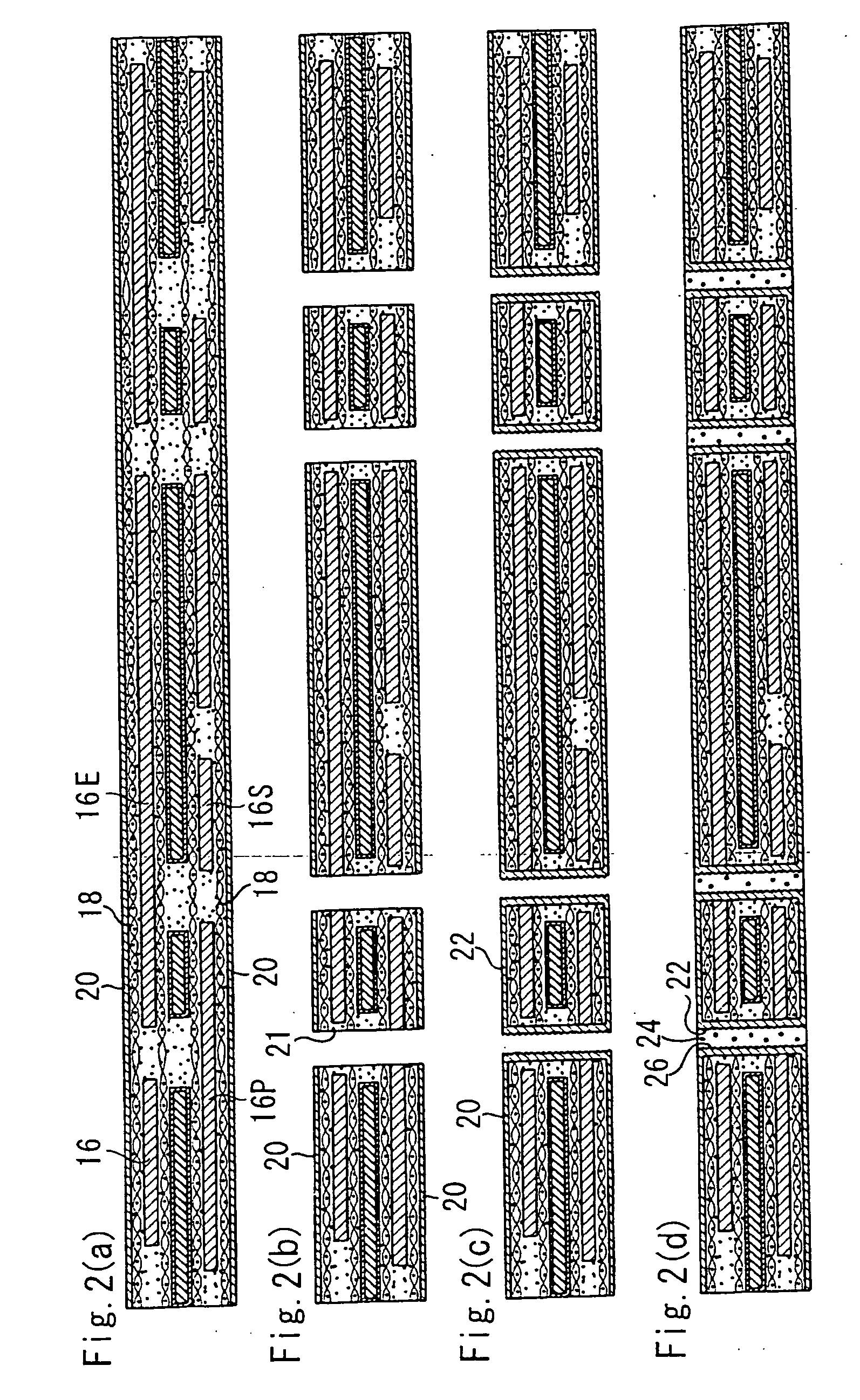Interlayer insulating layer for printed wiring board, printed wiring board and method for manufacturing same
a technology of interlayer insulating layer and printed wiring board, which is applied in the directions of printed circuit aspects, conductive pattern formation, transportation and packaging, etc., can solve the problems of reducing the thermal expansion coefficient of the interlayer dielectric layer, reducing connection reliability, and incurring such low connection reliability, so as to reduce the expansibility or contractility, effectively inhibit the expansion or contraction of the resin, and reduce the coefficient of thermal expansion
- Summary
- Abstract
- Description
- Claims
- Application Information
AI Technical Summary
Benefits of technology
Problems solved by technology
Method used
Image
Examples
embodiment 1
[0204] (A) Preparing a Kneaded Mixture Containing Flaky Particles
[0205] Fifteen grams of flaky particles (“ESPEN C” by the HOJUN; about 500 in aspect ratio when the particles are dispersed; about 0.5 μm in crystal size) was added to a mixed solvent containing 20 g of methyl ethyl ketone (will be referred to as “MEK” hereunder) and 80 g of xylene, and this mixture was kneaded using three rollers to prepare a kneaded mixture containing the flaky particles.
[0206] (B) Preparing a Solution Containing Epoxy Resin
[0207] Eighty five grams of solid epoxy resin (“EPICOAT 1007” by the Japan Epoxy Resin) was added to the mixed solvent containing 6.8 g of MEK and 27.2 g of xylene, and the resin and mixture were mixed together to prepare a solution containing the epoxy resin.
[0208] (C) Preparing a Resin Film for the Interlayer Dielectric Layer
[0209] The kneaded mixture containing the flaky particles, prepared in step (A) above, the solution containing the epoxy resin, prepared in step (B), d...
embodiment 2
[0295] A multilayer printed wiring board was produced similarly to the embodiment 1 except that the flaky particle used was “NANOFIL” (by the TOPY INDUSTRY; 100 to 500 in aspect ratio after the particles are dispersed; 0.1 to 0.5 μm in size; 0.001 μm in minimum particle thickness).
embodiment 3
[0296] A multilayer printed wiring board was produced similarly to the embodiment 1 except that the kneaded mixture containing flaky particles and solution containing epoxy resin were prepared as in processes (A) and (B) below:
[0297] (A) Preparing a Kneaded Mixture Containing Flaky Particles
[0298] Fifteen grams of flaky particles (“ESPEN C” by the HOJUN; about 500 in aspect ratio when the particles are dispersed; about 0.5 μm in crystal size) was added to a mixed solvent containing 33 g of MEK and 67 g of xylene, and this mixture was kneaded using three rollers to prepare a kneaded mixture containing the flaky particles.
[0299] (B) Preparing a Solution Containing Epoxy Resin
[0300] Eighty five grams of solid epoxy resin (“EPICOAT 1007” by the Japan Epoxy Resins) was added to the mixed solvent containing 11 g of MEK and 23 g of xylene, and the resin and mixture were mixed together to prepare a solution containing the epoxy resin.
PUM
 Login to View More
Login to View More Abstract
Description
Claims
Application Information
 Login to View More
Login to View More - R&D
- Intellectual Property
- Life Sciences
- Materials
- Tech Scout
- Unparalleled Data Quality
- Higher Quality Content
- 60% Fewer Hallucinations
Browse by: Latest US Patents, China's latest patents, Technical Efficacy Thesaurus, Application Domain, Technology Topic, Popular Technical Reports.
© 2025 PatSnap. All rights reserved.Legal|Privacy policy|Modern Slavery Act Transparency Statement|Sitemap|About US| Contact US: help@patsnap.com



